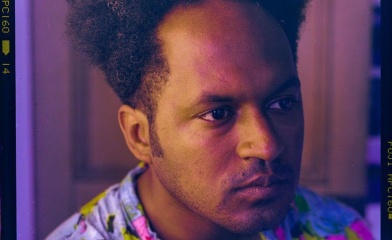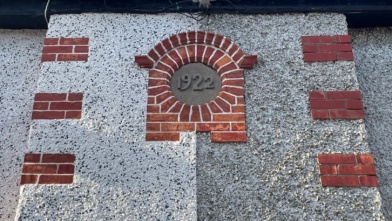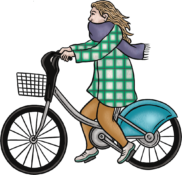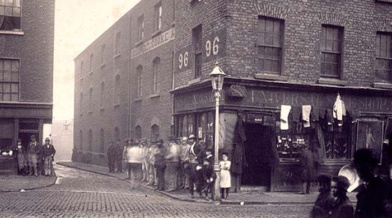
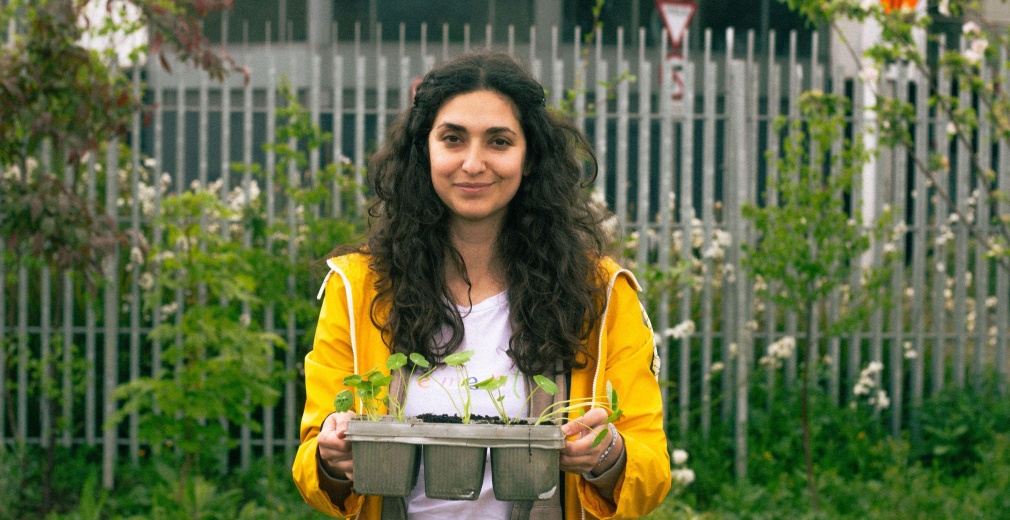
Irene Rondini - Photo by Elisabeth Steiner
Faces Behind D8 - Irene Rondini, Volunteer Gardener at Taplin's Fields Community Garden
From its guerrilla-gardening beginnings to becoming a thriving part of Bridgefoot Street Park, Taplin’s Fields has blossomed into a true beacon of community spirit in the Liberties. Run entirely by volunteers, the garden is about far more than vegetables and flowers, it’s a space where friendships are made, stories are shared, and nature thrives in the middle of the city.
Taplin’s Fields is more than just a place to grow vegetables, it’s a story of activism, creativity, and connection. Named in honour of local community hero Richie Taplin, from the Oliver Bond flats, who first began guerrilla gardening on the derelict site years before Bridgefoot Street Park existed, the garden now stands as a symbol of what can happen when neighbours come together to reclaim green space for everyone.
We sat down with Irene Rondini, one of the garden’s dedicated volunteers, to talk about the joy of growing together, the fight to create green spaces in Dublin 8, and the surprises along the way, from winning a pollinator award to an unexpected visit from a Japanese TV crew.
For Irene, who joined soon after moving to the Liberties from Italy, the garden is about connection as much as cultivation: “We’re not just growing plants,” she says. “We’re growing community.”
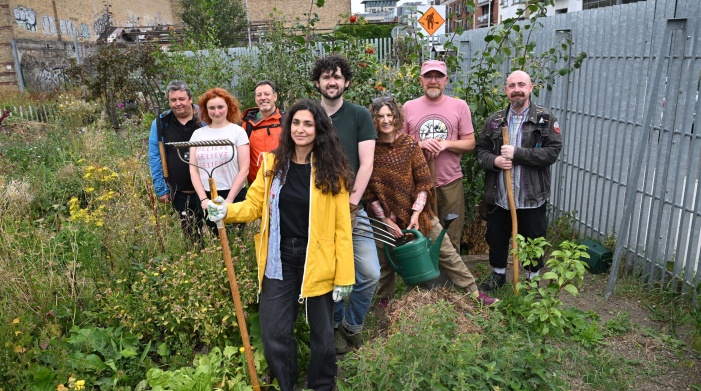
Taplin's Fields Community Garden Volunteers - Photo by Brian Meade
Can you introduce yourself and tell us how you first got involved with Taplin’s Fields?
My name is Irene Rondini, and I first got involved with the community garden shortly after I moved to the Liberties about four years ago. The garden opened in 2022, so I joined almost from the start.
The reason why I joined the garden is because I don’t have a balcony or a garden at home, and when I saw this beautiful park - the Bridgefoot Street Park - with a small garden space inside it, I thought, Perfect!
I’m originally from Italy and moved to Ireland more than six years ago, but it wasn’t until I moved to the Liberties that I felt really rooted somewhere.
What does being part of a community garden mean to you personally?
It means a lot. Being able to join a group from the area. It creates a sense of belonging to the Liberties, especially around Bridgefoot Street. Having access to green space and feeling nature close to me in the city centre matters a lot.
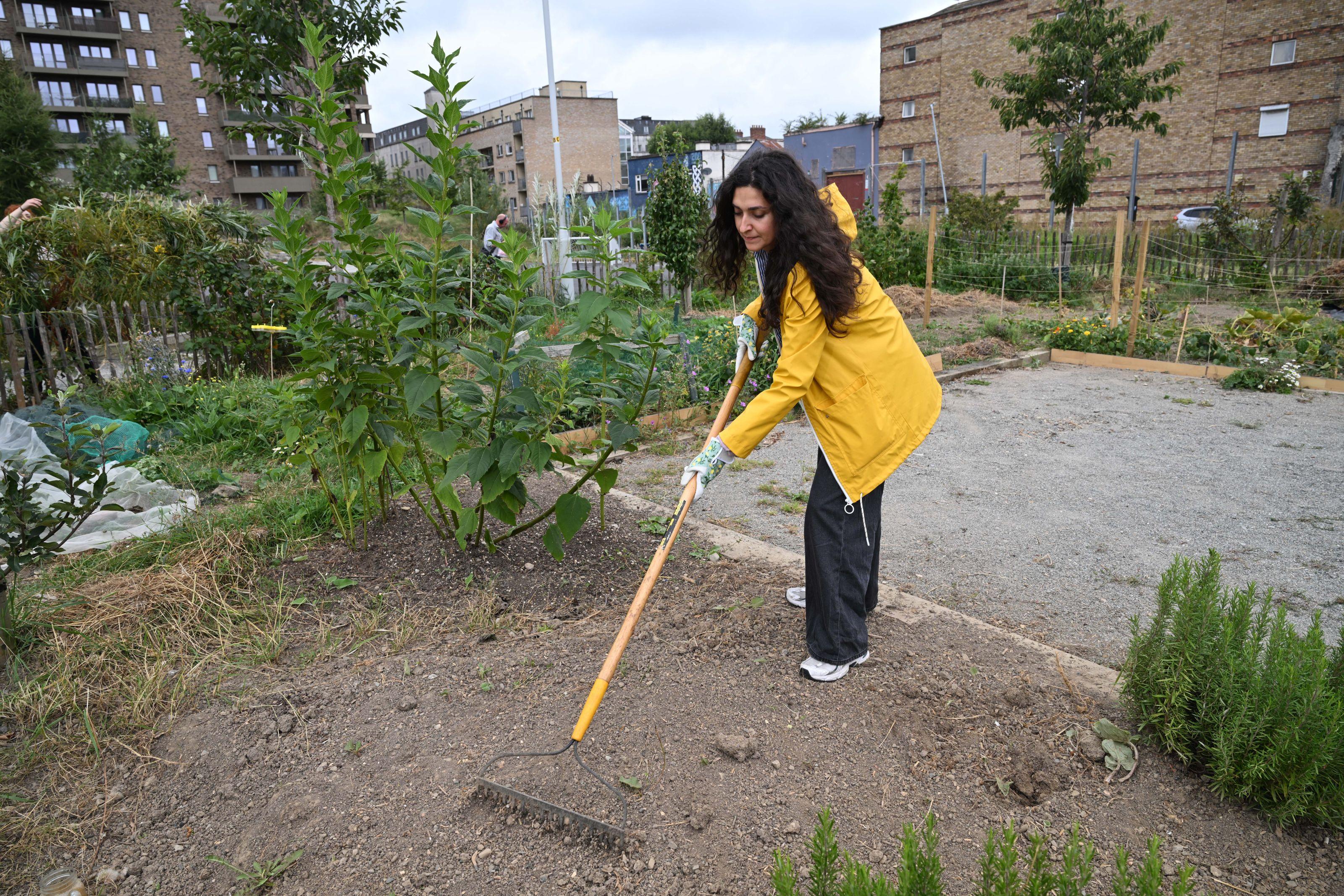
What’s a typical day in the garden like for you?
Usually our opening hours are on Saturdays. We meet in the garden, open the shed, and take out all the tools we need. We start with a little chat about what we should do that day and decide together who’s going to do what. There’s always plenty of informal chatting too! Sometimes people bring food, cupcakes, cakes and every now and then we even cook with produce from the garden. It’s really nice because we get to share the food we grow.
We usually work until around 1 or 2pm, and then we meet again the following week. It’s not just about work, there's a lot of conversation and fun as well.
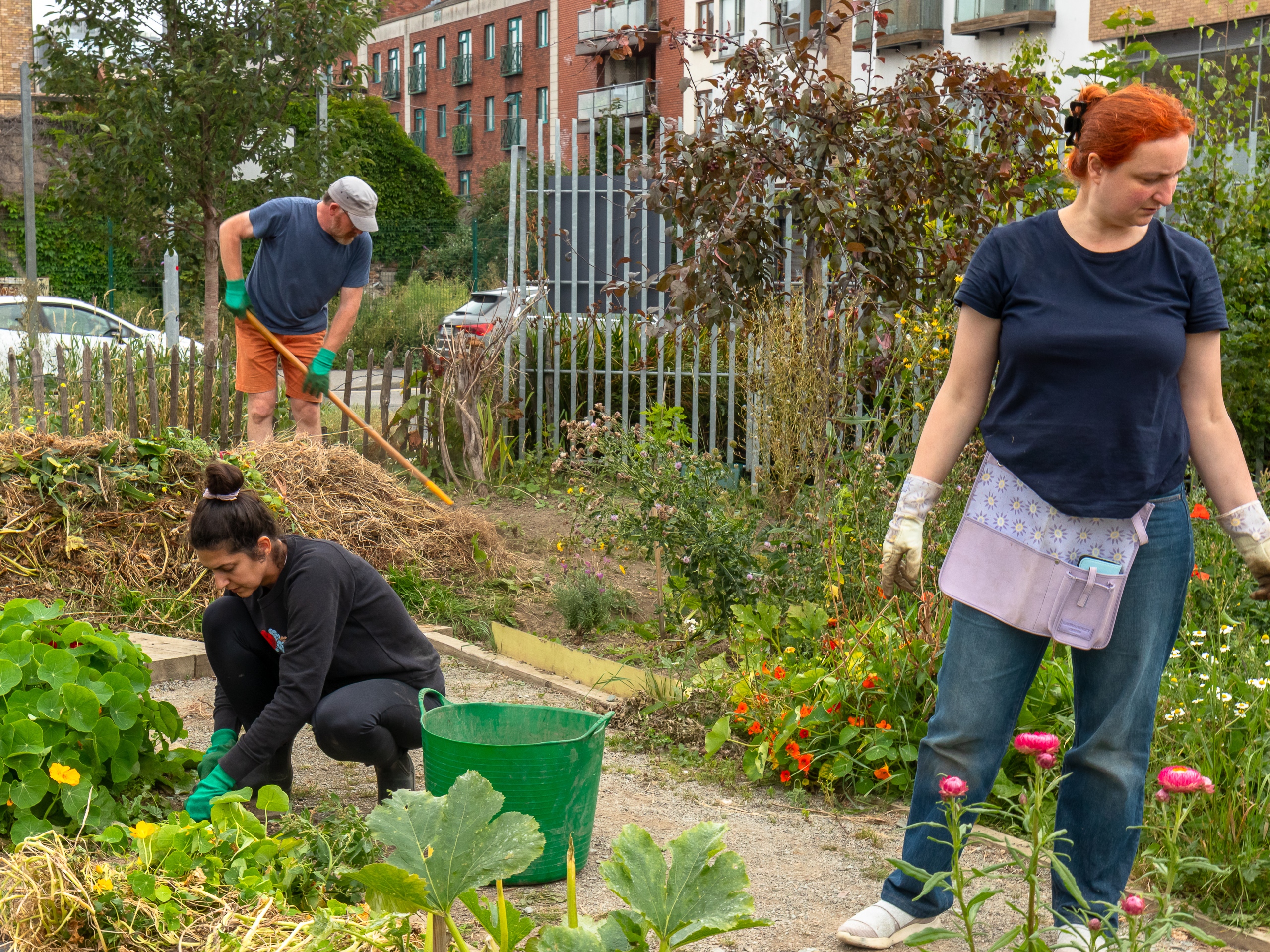
How do you plan what to grow throughout the seasons? Do you focus mainly on vegetables, or is it a mix of flowers, fruits, and other plants?
There’s a bit of a mix. We usually have a monthly meeting where we discuss what we’re going to plant. Aoife, who is our ‘plant expert’, she has the real know-how, so while we all decide together, she’s the one who guides us on what makes sense to grow.
We have vegetables and fruits, there are fruit bushes all around the garden, plus trees like apples, plums and pears, and we grow strawberries too. We also plant flowers, both ornamental ones and useful ones like nasturtiums that protect the crops and attract pollinators.
This year we even left one area almost wild to attract pollinators and support biodiversity. It worked so well that we won an award for pollinators from Powerscourt Estate, called Working with Nature.
We obviously grow vegetables, but we also want to be a place where nature thrives, it’s all about balance.
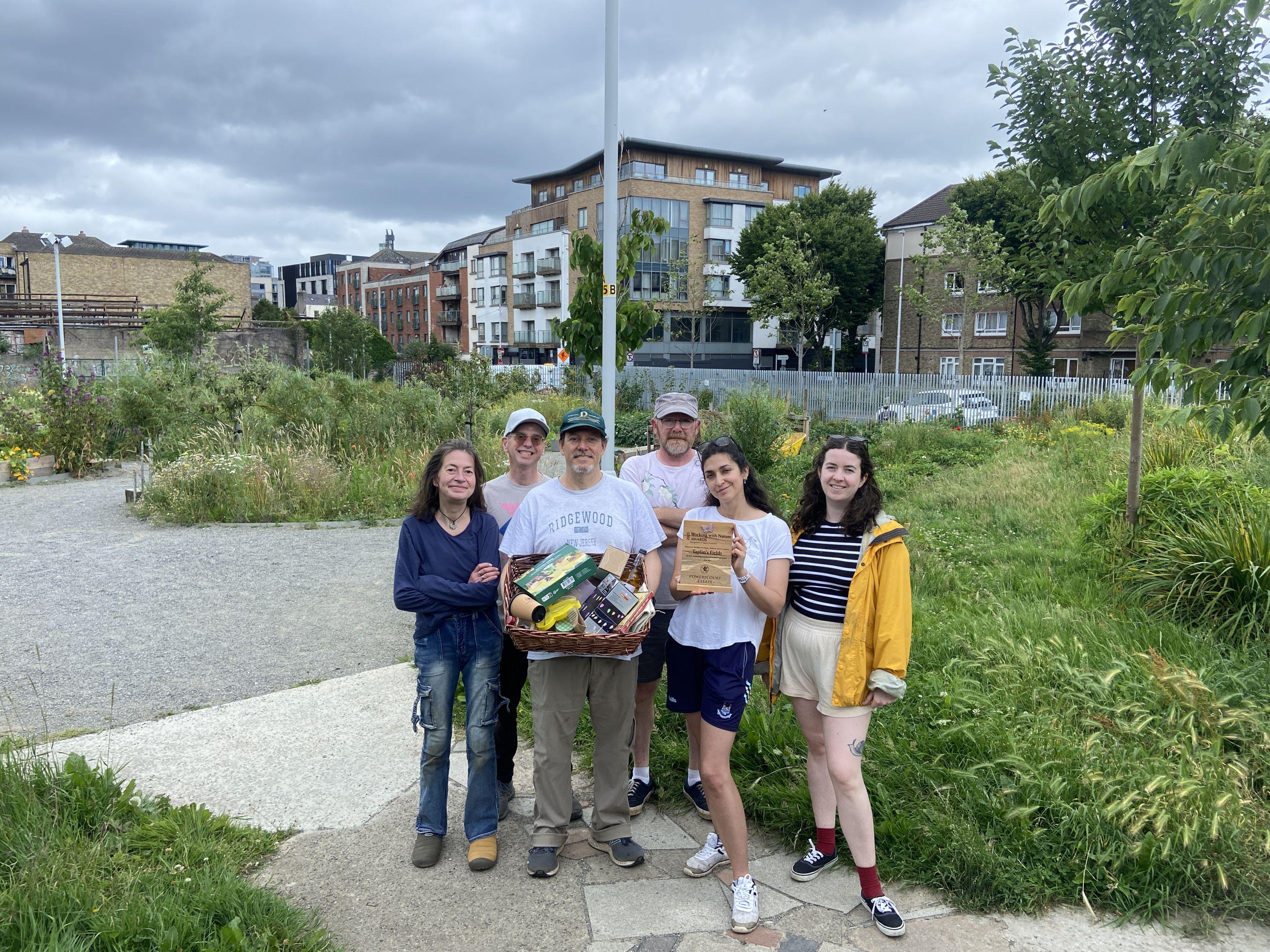
How many people work in the community garden?
It’s very variable. I’d say there are around 10 of us who are the regulars, we’re there most weeks. But it’s an open garden with no fee, so people might come for a few sessions and then move on. On a really good day, we might have 20 people in the garden, but that’s exceptional.
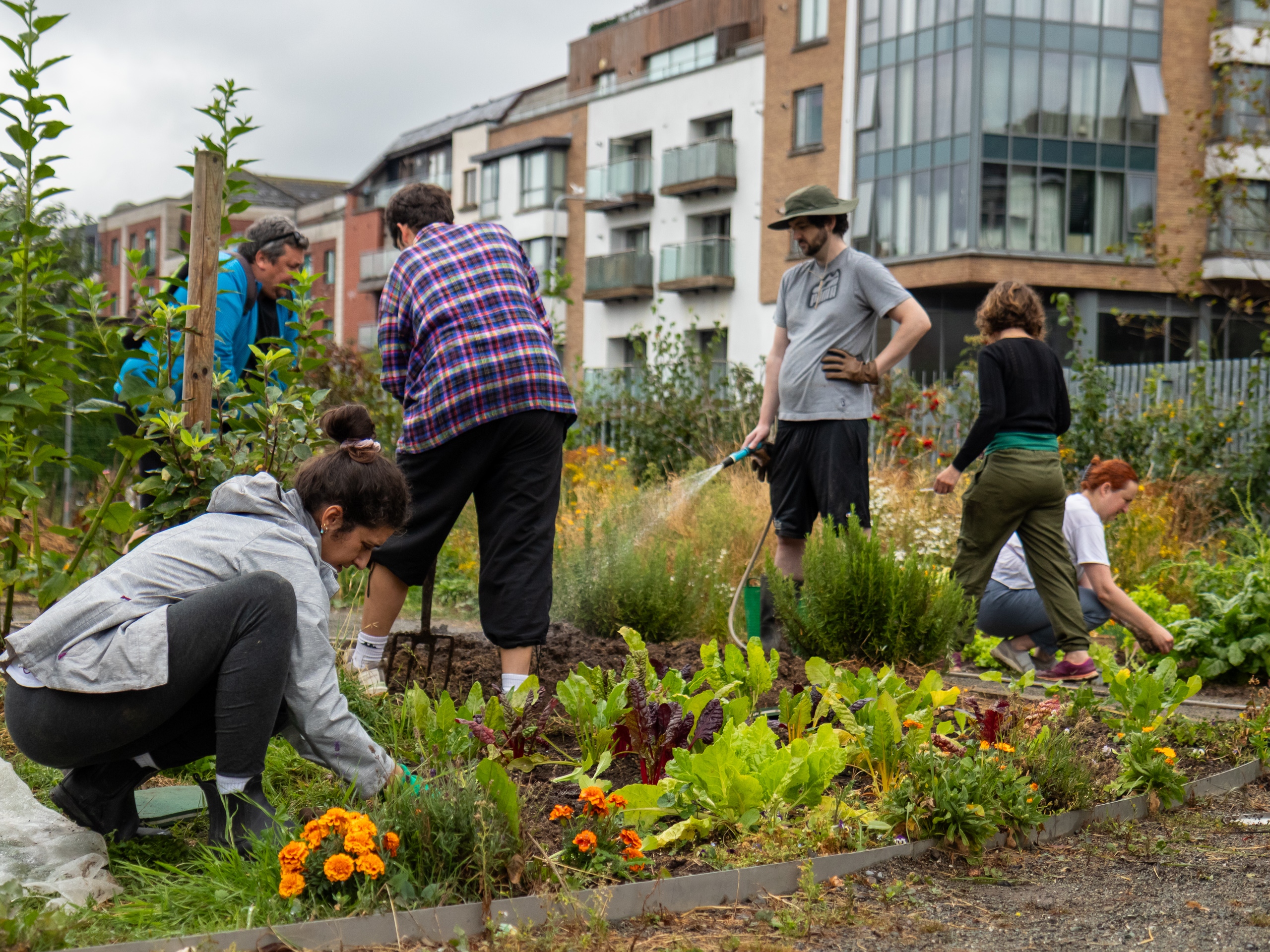
How do you divide up the vegetables when they’re ready to harvest?
We usually harvest at the end of each work session and share whatever we’ve picked that day.
Everyone who comes can take something home. For example, over the summer we planted pumpkins, but only one actually grew. So one of the volunteers, Melanie, made a pumpkin pie and shared it with everyone. It was really lovely.
We also have a stall at the We Love Markets event, which takes place in the Digital Hub Depot next door to us every 3 months. Our next one will be this October - so look out for us!
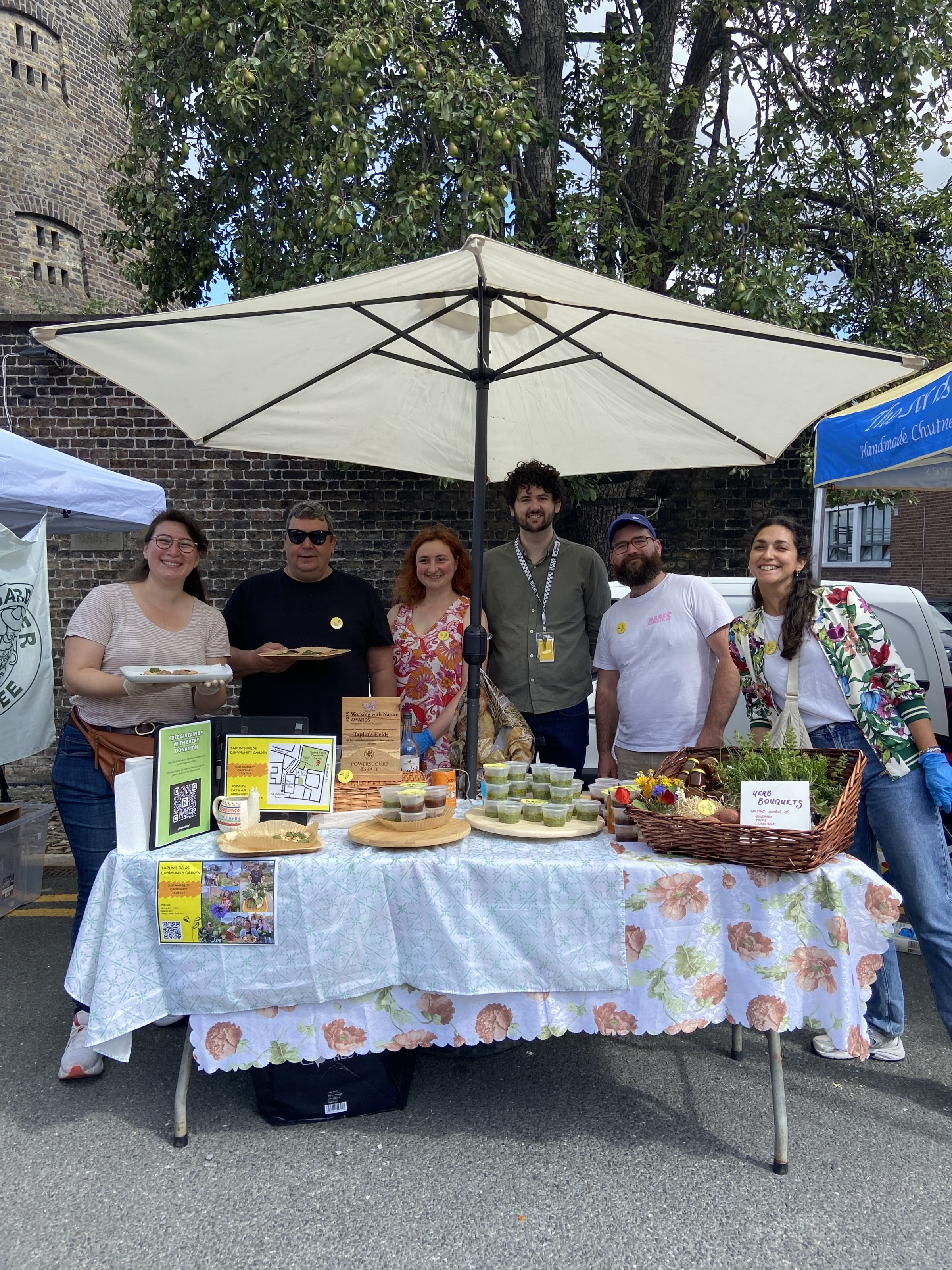
Taplin’s Fields has such a unique history, from guerrilla gardening to becoming part of Bridgefoot Street Park. What part of that story stands out most for you?
What really stands out to me is how much the local community fought for it. This area didn’t have many green spaces, and people really pushed to have a park instead of new developments. They organised, they campaigned and they actually made it happen.
They wanted a green space for kids to play, for people to enjoy nature, and they didn’t give up until it became a reality. I think that’s amazing.
Why do you think the garden has become such an important space for people in the Liberties?
I think it’s mainly because there just weren’t many parks or green spaces around here, not only in this part of the Liberties, but really in Dublin 8 in general. If you don’t count Phoenix Park, there’s not much greenery nearby.
That’s probably why the garden has become so important for people. And even if I can’t speak for the whole community, I know for the people who join the garden, it means a lot. It’s so good for mental health, for well-being, it’s just a really great space to have.
Can you tell us a little about Richie Taplin and why the garden was named after him?
Unfortunately, I never met Richie Taplin because he sadly passed away in 2019. But I’ve heard so much about him and how involved he was in local community projects. He was from the Oliver Bond flats.
The garden was named after him because where the park and garden now stand used to be a derelict space, there was nothing there, and Richie decided to take it over and create allotments.
That went on until the Dublin City Council decided to redevelop the site, and that’s when the activism really began, in 2016. Sadly, Richie passed away before the new park and garden opened in 2022, so naming it after him felt like a way to honour everything he did.
What do you enjoy most about working alongside other volunteers?
I really like that we don’t have individual allotments, we all work together. It makes it such a fun and interesting experience because we’re a mix of people from different countries and backgrounds. You end up learning something new every time, not just about gardening but about each other too.
Everyone works together in the same space, though some people take on little projects of their own. For example, one of our volunteers, Claire, is creating a small bog garden at the moment. Others focus on things like composting or growing certain vegetables. So it depends on what you’re interested in, you can develop your own ideas, but you’re never really working alone.
How has the garden helped bring people together from different walks of life?
I think it really has, because we’re all from such different backgrounds, different countries, different stages of life. Some people are born and raised in the Liberties, others have lived here for years, and some used to live nearby but still come back because they want to stay part of the community. There are also people from other parts of Dublin 8, and honestly, I’d say I consider myself a local now too, since I’ve been here a while. So it’s a real mix.
The garden brings all these people together. You end up forming this small community of people who might have completely different experiences and personalities, but we still find a way to work side by side. Sometimes opinions might clash, but that’s normal and it’s actually really nice to see how everyone gets along in the end. There’s this shared interest in nature and the community that connects us all.
Do you have a favourite memory of something that happened in the garden, big or small?
Yes! Something really fun happened about two years ago. We’re still not sure how it came about, but a Japanese TV crew suddenly turned up at the garden. They decided to film an episode of their show there, a whole segment about us! They even followed one of the gardeners, Bob, back to his home, where he cooked for them using onions from the garden. The funny thing is, we never heard anything more about it. We tried to look it up online but could never find the episode. So now we always joke that Bob is big in Japan! We say that when he goes there, everyone will recognise him.
What’s been your proudest gardening moment so far?
I think the proudest moment for the garden this year was when we won the award for pollinators and then we were also shortlisted for The Irish Times - Ireland’s Greenest Place! We made it into the final 14 across the whole country. I think Dingle Peninsula actually won, which is on a totally different scale, but for us it was like, “Wow, that’s amazing!”.
It felt really special to get that kind of recognition.
The garden embraces biodiversity and recycling, how does that philosophy shape the way you garden together?
Circularity is something we really try to embed in everything we do. I’d say about 90% of the materials we use in the garden are repurposed from something else. Everything from the wood we use for the beds to containers, it’s all donated or reused. That’s important not just because we don’t have much money, but also because we don’t want to buy new things when there’s already so much out there. It’s one of the main pillars of our garden’s philosophy.
Then there’s biodiversity, which is really important to me, especially in urban environment. From the start, we’ve always encouraged it by keeping things organic: no pesticides, no chemicals. But this year we went a step further. We left some areas of the garden wild for pollinators, built our own bug hotel, and made little log piles to create habitats for insects and small animals.
After winning the pollinator award, we also received a small grant, which we used to bring in a professional ecologist to do a biodiversity assessment. The ecologist told us we were already doing a really good job and gave us a few recommendations for how to improve even more. So now we’re planning to include those in our next year’s plan.
If a local child or new volunteer asked you why gardening matters, what would you say?
That’s a very important question. I’d say gardening matters for three main reasons.
First, it’s important for you, it’s so good for your mental health and your physical health. Then, it’s important for nature, because when you garden the right way, you help the environment thrive.
And finally, it’s important for the community. Our garden is in a park where everyone can see it, and you wouldn’t believe how many people stop to ask questions when they pass by. They see how valuable it is to have a green space like this, and how much it means that people from the area are looking after it.
So yes, I would recommend everyone to join a community garden, it’s about caring for yourself, for nature, and for each other.
What hopes do you have for Taplin’s Fields in the next few years?
I hope we keep attracting more volunteers, because even though the garden looks small, it actually takes a lot of work to look after. We always need more hands!
I’d also love to see us take on more interesting projects, like the bog garden we’re working on now, and to keep experimenting with new things. For example, this year we grew sweetcorn, for the first time. It was amazing to see it growing in an open community garden.
And finally, I hope we can keep spreading the word about Taplin’s Fields so more people know it’s here and see the work we’re doing and inspire more projects like this in the city.
If you could involve more people like schools or neighbours, how would you like that to happen?
It’s really simple, just come to the garden! We’re always open on Saturdays at 11am in Bridgefoot Street Park.
You can also find us on Instagram at @TaplinsFields, or get in touch by email at taplinsfields@gmail.com if you have any questions.
The important thing to know is that we’re not an allotment garden, there are no individual plots, everything is shared. That’s actually what makes it so special for the community. Allotment waiting lists can be up to ten years long, but with us, you can join straight away. There are no fees, and you don’t have to come every week, just drop in whenever you can and help out.
We’d also really love to engage more with children, because it’s so important to get young people involved in nature and growing things. The only challenge is that we can’t supervise kids ourselves, gardening can be dangerous! So if schools want to take part, they’d need to bring a teacher or supervisor. In the past, we’ve even given schools a small space in the garden to look after, which worked really well.
And families are totally welcome too, if parents come along with their kids, that’s absolutely fine.
Does Taplin’s Fields take part in any events or collaborate with other community groups?
Yes! Every few months we take part in the We Love Markets at The Digital Hub, usually on the last Sunday of each quarter. We bring things we’ve made from the garden, like nettle pesto or tomato chutney to share. It’s a great way to raise small donations, recruit new volunteers, and let more people know the garden exists.
We also collaborate with different organisations, like the National College of Art and Design (NCAD) and The Hugh Lane Gallery, where students and artists have done workshops and projects in the garden, and Bridgefoot Street Youth Community, who bring children to take part in gardening activities.
More recently, we’ve started connecting with other community gardens, like Broadstone in Phibsboro. It’s lovely to share ideas, swap seeds, and support each other. We’re even hoping to host a seed exchange event next year!
What would you say to someone in Dublin 8 who’s thinking of coming down for the first time?
I’d say don’t be afraid we’re all really nice people! Just come along. The great thing is there’s no gate, no fee, no pressure. You can come once, see how you feel, and if it’s not for you, that’s totally fine.
Usually, when someone new joins, we’re so happy to have them that we give them something from the garden, maybe some herbs or vegetables we’ve grown. So you’ll always go home with something!
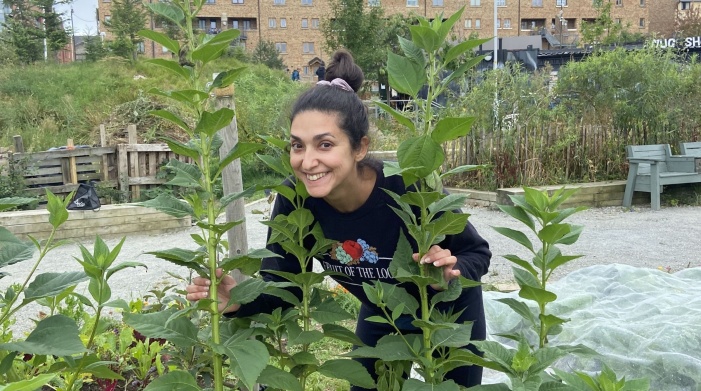
Irene Rondini with some Jerusalem Artichokes
Quickfire Round
Favourite thing you’ve ever grown?
Jerusalem artichokes! They’re growing in the garden now, and we’ll harvest them in winter. I love them because they’re a bit unusual, and the plants are so tall, nearly two metres! After the most recent storm, one was completely destroyed, but some even bloomed, which we were told doesn’t usually happen in Ireland.
Best gardening tip you’ve learned?
Patience. You have to be patient, if you rush things, it doesn’t work. Gardening teaches you to slow down, and you’ll be rewarded for it.
One word to describe Taplin’s Fields?
Community.
A place in Dublin 8 that inspires you outside the garden?
The Phoenix Park. And also Stillgarden Distillery Community Garden. I go there too and absolutely love it, so I want to give them a shout-out!


